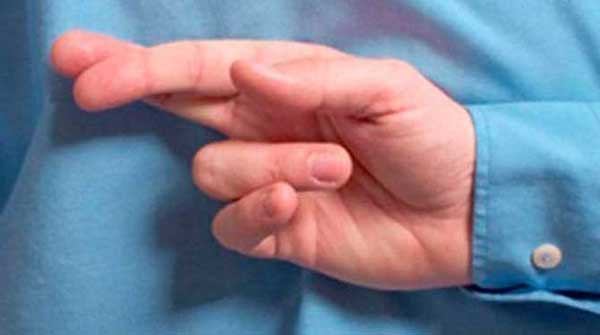If you don’t look like you’re telling the truth, it won’t matter that you actually are!
 I once spoke to MBA students at the Stanford Graduate School of Business as part of a wonderful program called the Mastery in Communication Initiative. In its expert speakers’ series, Stanford invites “pioneers in the field of communication” to share their insights with business students.
I once spoke to MBA students at the Stanford Graduate School of Business as part of a wonderful program called the Mastery in Communication Initiative. In its expert speakers’ series, Stanford invites “pioneers in the field of communication” to share their insights with business students.
In my presentation on How to Spot Liars at Work, I offered students an overview of why people in the workplace lie, the kinds of lies they tell, and the high cost of deception for the individual and the organization. I also gave very specific verbal and nonverbal cues for spotting liars, and a set of questions to ask when developing a strategy to deal with liars.
I closed with a section on “how not to look like a liar when you’re telling the truth.” I like to end with this topic because I see so many candid people whose ideas get dismissed or disbelieved, simply because they don’t appear to be forthright. These are techniques that students could use immediately when interviewing for a job or pitching their ideas to colleagues, instructors, and professional investors.
 |
| Related Stories |
| How Santa knows if you were naughty or nice
|
| Three mistakes that lead to a lousy first impression
|
| What if your career depended on your ability to spot a lie?
|
Body language is the management of time, space, gestures, facial expressions, eye contact, stance, posture, and paralinguistics. When your body language is out of alignment with your verbal message, most people will believe what they see and not what you say. When being candid, there are two crucial body language signals to keep in mind:
1) Maintain positive eye contact
Eye contact bears no relationship to honesty, but it is still the most commonly believed myth (liars can’t look you in the eyes), so it has to be acknowledged. If you continually look down, let your eyes dart around the room or otherwise avoid meeting the other person’s gaze, people will probably think that you don’t believe what you’re saying or are being deceptive.
To be perceived as open and honest, look directly at the other person, especially when making a declarative statement. This is most important to remember if you are shy and avoid eye contact naturally or come from a culture where dropping eye contact is considered polite. Business people from the U.S., Canada, Europe, Australia (and many other parts of the world) will expect you to maintain eye contact 50 to 60 percent of the time. If you don’t, you won’t appear to be shy or polite. You’ll look as if you have something to hide.
2) Control stress signals
Most nonverbal deception cues are actually stress cues. When you are nervous (for any reason), you are likely to display increased stress signals. You might fidget, bounce your legs, rub your hands together, or fiddle with your jewelry. These stress displays are often mistakenly judged as signs of insincerity. Two quick ways to control stress and project increased confidence/sincerity are “Power Posing” and “Power Priming.”
Power Posing is based on Columbia and Harvard Business School research into the effects of body posture on confidence. It has shown that simply holding your body in expansive, “high-power” poses (leaning back with hands behind the head and feet up on a desk or standing with legs and arms stretched wide open) for as little as two minutes stimulates higher levels of testosterone – the hormone linked to power and dominance – and lower levels of cortisol, a stress hormone. In addition to causing hormonal shifts in both males and females, these poses lead to increased feelings of power and a higher tolerance for risk. The study also corroborated my observation that people are more often influenced by how they feel about you than by what you’re saying.
Power priming starts with remembering a personal experience in which you had power (or were very successful). When primed with these powerful memories, it can dramatically impact the impressions that others have of you. In one research study, subjects were asked to recall a time they had or lacked power prior to writing a job application letter or being interviewed for admission to business schools. Independent judges, unaware of the applicants’ experimental condition or even the existence of the power manipulation, significantly preferred the power primed applicants in both written and face-to-face interviews.
Honesty is the best policy – but if you don’t look like you’re telling the truth, it won’t matter that you actually are!
Carol Kinsey Goman, PhD, is an executive coach, consultant, and international keynote speaker at corporate, government, and association events. She is also the author of STAND OUT: How to Build Your Leadership Presence.
For interview requests, click here.
The opinions expressed by our columnists and contributors are theirs alone and do not inherently or expressly reflect the views of our publication.
© Troy Media
Troy Media is an editorial content provider to media outlets and its own hosted community news outlets across Canada.
